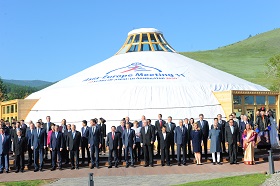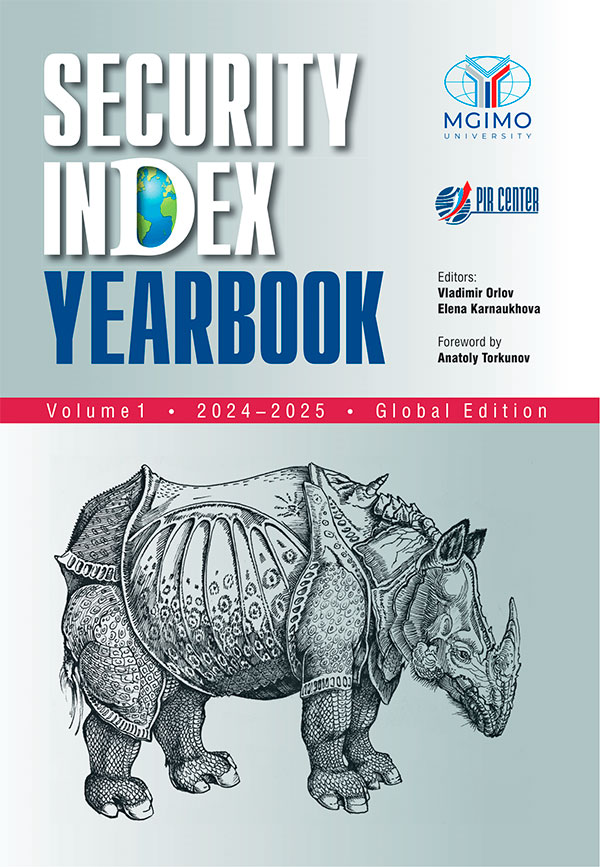In spite of constant assertions by officials that Russia is a Eurasian power, recent years have seen growing references to Russia's pivot towards the East and commitment to interaction priority with Asia. Often the sharp turn towards the Asia-Pacific Region is mentioned in the context of Russia's deteriorating relations with Western countries, which make it necessary to compensate for the losses caused by geopolitical confrontation and sanctions imposed against Russia in 2014.
In spite of constant assertions by officials that Russia is a Eurasian power, recent years have seen growing references to Russia's pivot towards the East and commitment to interaction priority with Asia. Often the sharp turn towards the Asia-Pacific Region is mentioned in the context of Russia's deteriorating relations with Western countries, which make it necessary to compensate for the losses caused by geopolitical confrontation and sanctions imposed against Russia in 2014.
Yet this simplistic interpretation may only come from a superficial observer who has forgotten the principles of multi-vector diplomacy introduced into Russian foreign policy discourse when Evgeny Primakov was Foreign Minister, at first more as a theory, but one which eventually yielded practical results. The foreign ministers who have succeeded Primakov and subsequent leaders of the Russian state have not departed an inch from that principle.
Another principle of Russian diplomacy over the past quarter century has been maximum involvement in international institutions and mechanisms. This makes it possible not only to "keep a finger on the pulse" of current events, but also offers the full range of opportunities to promote all Russian initiatives, depending on the format of the meetings.
The recent summit of ASEM, the Asia-Europe Meetings mechanism, was created back in 1996, anticipated by the 1994 report "New Asia Strategy” which harbingered the wish to formalize such a dialogue and also the recognition by the narrow circle of original EU members of the APR countries’ increasingly important role. That it was the narrow circle of EU members is not accidental because it was in the 1990s, after the end of bipolar confrontation, that the Europeans showed a maximum of independence, promotion of their own interests and a commitment to a multi-vector policy.
Unfortunately, Russia was not a member of ASEM in its first fifteen years. This was because, on the one hand, the country at the time was orientated towards the West (as manifested first in Andrey Kozyrev's appeasement policy and later in the rivalry-cooperation key) and priority was attached to resolving the military-political problems connected with NATO enlargement and events around Yugoslavia. The topic of socio-economic cooperation – which is key to the ASEM agenda – did not receive its fair share of attention from Russia. One might recall that in those years Russia went out of its way to become a fully-fledged member of the G7 and saw the answer to economic problems in an international context, in obtaining loans and restructuring previously incurred loans by the leading Western countries, i.e., G7. Although many experts still maintain that the formal announcement of the 1998 Birmingham summit of the G8 marked the start of Russia's full membership in that elite club of nations, the 1998 default, which dealt a sharp blow to the Russian economy, put into question the key financial-economic component of Russia's membership of that group. At the same time, Russia was not invited to the Second ASEM Summit held in 1998 in London, although it would have been more than logical to do so, considering its agenda and the discussion of the 1997 Asian financial crisis and how to overcome it. Equally surprising was Russia's absence from ASEM, which discussed strengthening the links between two major regions of Europe and Asia, especially given Russia’s strategic position as a bridge between Europe and Asia, as Russian politicians and experts have pointed out.
Because Russia initially showed little interest in this platform, its accession to this forum was, for a certain period, put on the back burner on the specious pretext that Russia did not belong to any of the above mega-regions. In accordance with the "two keys" rule, Russia was not allowed to take part in this mechanism as part of Europe. Notwithstanding the twists and turns of a long, drawn-out process, Russia eventually became a member of ASEM in 2010, but only as part of Asia. As of today, the forum has 51 members, a representative of the European Communities Commission (ECC), and the ASEAN secretariat.
ASEM recently marked its 20th anniversary. Its membership has almost doubled in the interim. Its agenda has also changed considerably, owing to increased global and regional threats and admission of new ASEM members, whose priorities are largely military and political. In addition to social and financial-economic problems, security concerns have come to the fore: the fight against terror (not surprisingly, the tragic events in Nice and the abortive government coup in Turkey have influenced the agenda), cross-border crime, drug trafficking and money laundering.
Yet, as regards the significance of ASEM for Russia, there is a sense that, apart from membership as such, the attitude to the dialogue format has not changed much. Although key media did cover the meetings to varying degrees, it was nothing on par with the level of excitement generated, for example, by the BRICS summit, let alone the NATO summit in Warsaw, though it is a bit of a stretch to compare the amount of attention given to these events. The level of participation was another indicator of the lukewarm interest in the event. While the previous summits had been attended by the Russian President, this year’s ASEM summit in Ulaanbaatar had to be content with participation by Russian Prime Minister Dmitry Medvedev.
Even so, a similar attitude toward the forum was demonstrated by most other members. At least half the European members sent their foreign ministers and, of the great Western powers, only the leaders of Germany and Japan saw fit to attend the summit. This suggests that the key ASEM partners do not see this platform as the most promising and give priority to others, such as G20, as well as G7 and BRICS, depending on affiliation with one or the other "camp," and, to some extent, APEC (potential wrangling over the formation of TPP, RCEP, etc.).
The fact that the US is not a member of ASEM is not the least of the reasons that the forum fails to occupy a leading position among the plethora of similar international venues. On the other hand, the absence of Washington offers some advantages, which, however, cannot yet be realised because many ASEM members look towards the US.
Without exaggerating the significance of ASEM, the usefulness of this dialogue mechanism cannot be denied. The summit adopted two documents, the Ulaanbaatar Declaration on the forum called "Asia-Europe at the Turn of the Third Millennium" and the Statement of the Chairman of the 11th ASEM Summit, listing the results of the Summit. Although no ground-breaking decisions were made (which would have been virtually impossible), ASEM does offer an additional chance for high-level communication (including bilateral talks on the fringes of the forum). Effective business communication among ASEM countries may strengthen trade and economic ties and increase interdependence, one of the key aspects for Russia today. Finally, involvement in international dialogue platforms does not merely provide an opportunity to demonstrate Russia's fully-fledged participation in global and regional affairs, but also greater room for diplomatic manoeuvre in the complicated current situation.






